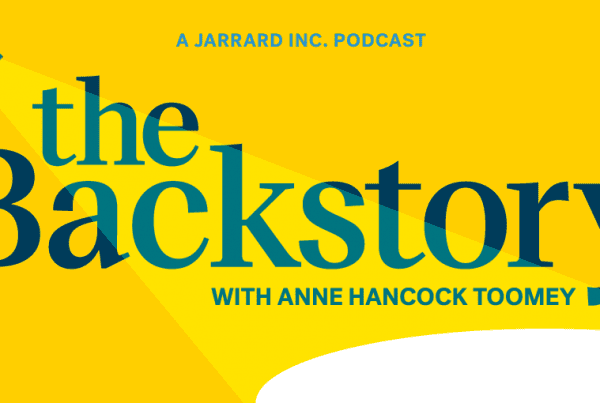The Big Story: A Weak Attempt at Pitting Hospitals Against Each Other
“Not only would that not be a hospital that anyone would want for their community, but such a hospital would very likely cease to exist. While that possibility may not be a concern for billionaires who can fly to any hospital in the country for care, that is not the world that the vast majority of Americans live in.”
Trust, experts and (mis)education
By David Jarrard and David Shifrin
4-minute read
Imagine you’ve just arrived from a galaxy far, far away and stumble across a U.S. healthcare news feed for the first time. What would you learn about America’s healthcare system?
You’d accurately discern that our healthcare system is expensive and complex and not working particularly well for anybody. And you’d be forgiven if you concluded from the feed that the culprits to blame for this broken system are hospitals.
A few examples from the last month you might find?
- The Washington Post’s Elizabeth Rosenthal explaining “Why many nonprofit (wink, wink) hospitals are rolling in money.”
- The Wall Street Journal’s damning piece on Steward’s CEO who was paid $250 million while the hospitals under his care collapsed and who seemed oddly concerned about the value of his boats.
- Over at STAT, you’d read that the financial backers of some hospitals and other providers of are, actually, “vampires.”
If, in your search, you digitally visited a relatively low-key think tank for a more academic perspective, you might stop by Third Way, a thoughtful policy shop “grounded in the mainstream American values of opportunity, freedom and security.”
There’d you find A Tale of Two Hospitals: Why Some Hospitals Succeed and Others Do Not.
“Hospitals persistently spread the myth that they are losing money on Medicare in order to justify large markups to patients with private coverage,” write the researchers. “But the facts tell a different story.”
It’s a good-looking study. It’s well-written and attractively produced by an organization deemed credible among the chattering class. An enterprising reporter or Congressional committee staff looking for background material on hospital finances may find its findings reasonable and helpful.
That its findings are off base; that it compares apples to kiwis to compare hospital performance in drastically different markets is beside the point, which is this:
The Third Way’s report is yet another example of what is being taught about the state of hospitals in the U.S. today.
The stories above are just recent samples. We could go on. The Lown Institute has its annual Fair Share Spending Report. Other thoughtful and well-respected voices have weighed in on hospitals’ tax exempt status and profits. Piling on has begun.
To be clear: Not all the critiques of hospitals are unfair or unwarranted. Hospitals have problems, some are big and more than a few are self-inflicted.
So why should we care about one more caustic report?
Three concerns here:
- Eroding Trust – The public is being educated. But what is it learning? It’s clear what they’re gleaning is not good for hospitals. No wonder trust in the industry is eroding. It’s a storyline we at Jarrard have been tracking for years and running surveys to discern. Strong majorities find messages critical of hospitals believable. And when trust declines, the ground is fertile for critics to play fast and loose with the facts. It fits the narrative, so it is accepted, further feeding the narrative.
- Conventional Wisdom – Misinformation can coalesce rather quickly into “conventional wisdom.” For anyone on the wrong side of conventional wisdom, half of the challenge is to recognize it in time to respond or even get ahead of it rather than being stuck playing catch up. The other half? Discerning when to stay quiet on things that aren’t worth responding to or giving them more attention than they deserve.
- Teaching a Slant – Beyond just the public, misinformers are teaching local reporters how to ask loaded questions and slanting their thinking about these issues. That’s more dangerous to hospitals than skepticism among the public, or even questioning stories in the trades. While effective responses can be delivered, sometimes the damage is in the question itself.
Schooling the Detractors
What is a healthcare leader to do in response to this drumbeat?
The American Hospital Association offered one way in response to Third Way by sharply discrediting the paper and thumping Arnold Ventures LLC, the group that which funds the research the think tank used to draw its poor picture of hospital operations.
“It is no surprise that the authors drew these conclusions given their use of the highly flawed data and methodologies developed through other Arnold-funded work,” shot the AHA.
“Unfortunately, instead of using their immense wealth to truly understand the issues driving health care costs and the broad impacts on American society, the Arnolds have recklessly bought into and are working to advance an inaccurate narrative of hospitals…It is no surprise that the authors drew these conclusions given their use of the highly flawed data and methodologies developed through other Arnold-funded work.”
The AHA felt this more obscure report was important enough that it deserved a response – and one delivered more pointed than usual. The organization addressed not only the findings, but its backers and their motivations.
To the sure, the AHA has been responding to attacks on hospitals for years (it’s part of the job) but has been sharper and faster as the criticism mounts. It’s something the AHA and others must continue to do; the incessant news feed demands a countervailing narrative.
Otherwise, silence becomes confirmation of the negative.
How to respond to miseducation?
First, healthcare leaders and communicators should be aware of what’s being said – true and false.
Second, know and repeatedly tell your solid, mission-and data-filled story using understandable language via a variety of channels that resonate with your unique stakeholders.
Then, when it matters, correct the record. Here’s a rule of thumb: The more credible the source of the incorrect information, the more important the need for your tone-appropriate correction.
Always bring balance to the Force.
In the midst of the daily grind and endless to-dos of operating and communicating about your organization, take a moment here and there to think about how you’re reading the wind, how you’re sensing any shifts in momentum. And what you might say if someone asks. Because, chances are, they will.
The public is very much in school. Our advice: Be the teacher.
Contributors: Emme Nelson Baxter, Tim Stewart
Image Credit: Shannon Threadgill




